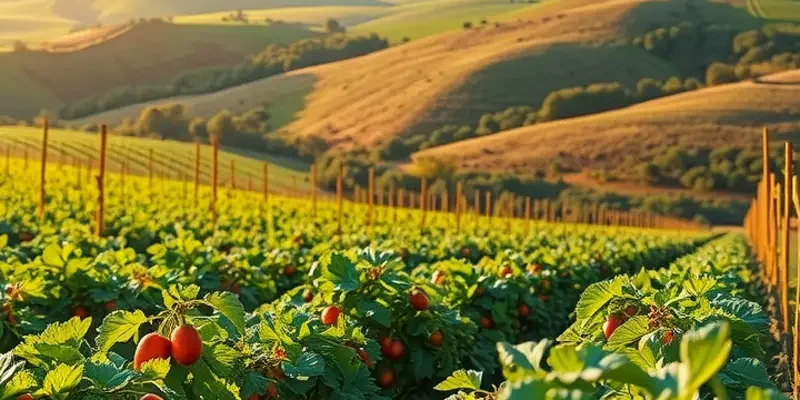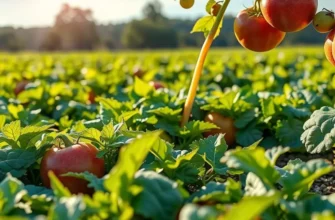Safe food handling is essential for maintaining health and minimizing waste at home. Proper techniques not only ensure that your meals are safe to consume, but they also maximize freshness, reduce spoilage, and promote effective food management. By understanding the fundamentals of food storage and safe practices, everyone can enhance their culinary experience while being conscious of their impact on the environment.
Mastering Food Storage Techniques

Effective food storage is crucial for maintaining freshness and minimizing waste. Developing efficient habits regarding how we organize and store food can not only extend shelf life but also prevent unfortunate spoilage. Let’s explore several strategies to optimize your food storage techniques.
A well-organized fridge is your first line of defense against food spoilage. To achieve this, start by keeping items with a shorter shelf life in visible, easily accessible spots. This ensures they are consumed before they perish. Place raw meats and fish on the bottom shelf, where temperatures are more consistent and leakage won’t contaminate other foods. Fruits and vegetables need specific conditions; use the crisper drawers with appropriate humidity settings to keep them fresh longer.
Labeling and dating your food containers can significantly reduce food waste. Adhesive labels or erasable markers work well for this purpose. Mark the purchase or preparation date on containers to ensure you consume foods within safe periods. You can also keep a small list on your fridge noting items and their respective shelf lives, serving as a quick reference to avoid forgotten foods.
In the pantry, implementing a first-in, first-out system ensures older items are used first. Clear storage containers are advantageous as they allow you to see contents at a glance, minimizing the risk of items being overlooked and expiring. Adjusting shelf height to accommodate different types of items can maximize space efficiency. Tall containers for pasta and grains, shorter ones for canned goods, and smaller jars for spices and seasonings all help you make better use of available space.
When it comes to containers, choose wisely based on specific needs. Glass containers are excellent for microwave use, while stainless steel options are durable and ideal for storing foods with strong aromas. Make sure all containers have airtight seals to prevent moisture from creeping in, which can hasten spoilage. Ordinary glass jars can also be a sustainable choice for dry goods such as grains, lentils, and nuts.
For items like sauces that might be used sporadically, it’s essential to store them in ways that maximize shelf life. Consider portioning sauces into smaller jars or using condiment dispensers that limit exposure to air, greatly extending their storage time. For further tips on sauce storage, see safer sauce storage techniques.
Overall, having a strategy for each area of your food storage—fridge, pantry, and containers—empowers you to keep food fresh and minimize waste efficiently. Adopting these habits can make a noticeable difference in your kitchen, saving both food and money.
Strategies for Reducing Food Waste

Reducing food waste is crucial not only for the environment but also for your wallet and household efficiency. An effective strategy includes comprehensive meal planning, meticulous portioning, and inventive ways to utilize leftovers. Each of these plays a significant role in minimizing food waste at home.
Meal Planning with Purpose
Meal planning is the foundation of reducing food waste. Begin with a template that accommodates your household’s dietary preferences and weekly schedule. This prevents random buying and excess groceries that often go to waste. Focus on versatile ingredients that can be used across several meals. The abundance of online resources and forums can offer meal planning guides and inspiration.
Creating a shopping list based on your plan aids in purchasing only what is necessary. Implementing a “use soon” list for perishable items ensures they don’t linger in your pantry or fridge. Consider exploring practical ingredient batching to maximize your grocery purchases and reduce unused food.
Mindful Portioning
Portion control is often overlooked but critically impacts food waste. Using digital kitchen scales or measuring cups can help serve appropriate amounts. Start with smaller portions, especially for new recipes, to gauge individual preferences and avoid leftovers. Adjusting recipes to suit your household’s size can further ensure food is consumed rather than discarded.
Leveraging Leftovers Creatively
Leftovers can be transformed into exciting new meals. View them as a starting point for culinary creativity rather than mundane repeats. Soups, casseroles, or stir-fries can incorporate various remnants from the fridge. Additionally, reimagining leftovers with unique spices, sauces, or fresh vegetables can breathe new life into dishes, making them a delight rather than a chore to consume.
Food scraps such as vegetable peels or bones can be repurposed into broths. Composting may be an option for those with garden space, providing nutrient-rich material for maintaining a sustainable garden.
Managing food waste requires creativity and consistent practice. Encouraging household participation in these strategies not only enhances meal satisfaction but fosters a more sustainable lifestyle. Implementing these methods ensures almost no food is wasted, save for the rare miscalculation or unexpected change of plans.
Final words
Practicing safe food handling is vital not only for maintaining health but also for reducing environmental impact through mindful food management. By mastering storage techniques and minimizing food waste, you enhance your ability to enjoy fresh ingredients while educating yourself on sustainability. Implementing simple tips in your everyday cooking and storage routines can lead to significant improvements in your kitchen’s efficiency. Start today to cultivate a safe and waste-free cooking environment and enjoy the benefits of mindful food practices.







